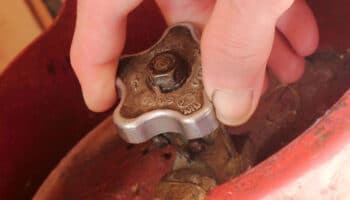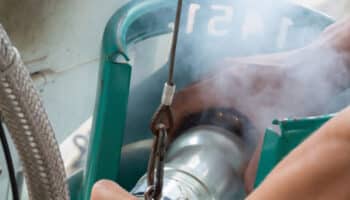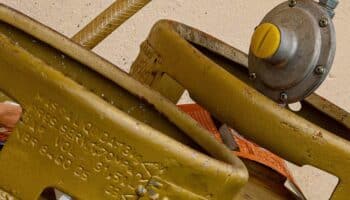We've independently reviewed this article to make sure it's as accurate as we can make it.
To find out more about our article creation and review process, check out our editorial guidelines.
Are you wondering how to loosen an outside water faucet?
You’re not alone! I know how annoying it can be when your outdoor faucet handle gets stuck and is so difficult to turn.
But don’t worry; I’m here to help.
To loosen a stuck outside water faucet, try turning it with a wrench, heating it with a hairdryer, or brushing it with a wire brush. Covering the faucet with plumber’s grease and soaking it with vinegar can also help.
Read on for more detailed instructions to get your faucet turning again!
How to Loosen An Outside Water Faucet: 5 Ways
Different reasons can explain why your outside faucet won’t turn on. Luckily, loosening it is very quick and simple.
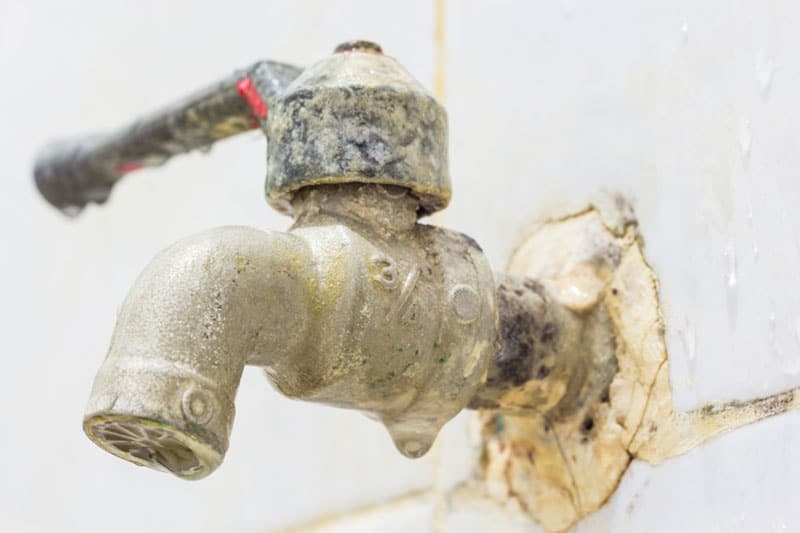
In this section, I’ll guide you through five different ways in which you can solve the problem.
Keep in mind that the effectiveness of the methods provided in this article will vary depending on the specific condition of your faucet.
#1 Turn the Outside Water Faucet With a Wrench
When an outdoor faucet handle won’t turn on, I always try turning it with a wrench to loosen it.
A wrench provides a strong grip and leverage to break the seal or loosen the stuck parts.
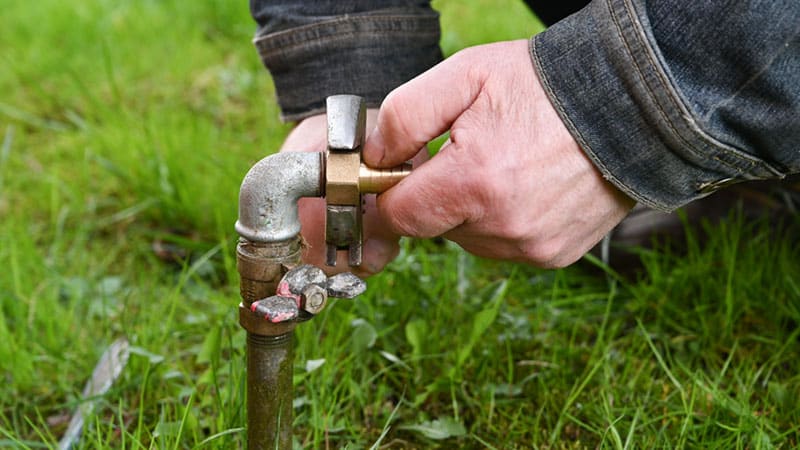
Wrap the wrench around the faucet’s nut and hold it securely. Then turn the wrench counterclockwise. Be careful not to apply too much force.
Tip: Working with gloves will give you an even tighter grip.
#2 Use a Hairdryer
If your outdoor water spigot handle won’t turn on, try using a hair dryer.
Now, I know what you’re thinking. A hairdryer? To loosen a faucet? But hang on; there’s a method to our madness!
I find that when an outdoor faucet won’t turn on, it’s usually because of a build-up of corrosion.
The corrosion is due to the faucet’s everyday exposure to moisture in the air, which causes layers of rust to settle on the faucet over time. Before you know it, you can’t turn the faucet handle without pulling the whole fixture from the ground!
So what do you need to do? You must loosen the rust and break down the corrosion. That’s where your hairdryer comes in.
Your hairdryer will heat the faucet, causing the metal to swell and loosen its grip on the pipe, thereby allowing you to turn it.
Here’s how to use your hairdryer to help turn your faucet:
- Turn on your hairdryer.
- Blow the heat of the hairdryer over the corroded part of the faucet. Avoid going overboard, as you could end up degrading plastic parts.
- Turn the hairdryer off. Before the faucet cools down, try to turn it with a wrench.
#3 Brush Your Outdoor Faucet With a Wire Brush
I also recommend using a wire brush to loosen a stuck outside water faucet.
Have you tried heating the faucet with a hairdryer? Then a wire brush should help you remove some of the corrosion that has loosened around the faucet. Once you’ve removed the excess corrosion, it should be easier for you to turn the faucet.
Here’s what you need to do:
- Brush around the faucet using a wire brush.
- Wipe around the faucet using an old rag.
- Try turning the faucet again using the wrench.
#4 Use Plumber’s Grease
When I see an outside water faucet that won’t turn on despite trying the fixes above, I always use plumber’s grease.
Plumber’s grease works as a penetrating oil that will force the corrosion off of the faucet.
Here’s how to use plumber’s grease to loosen your outside faucet.
- Apply the plumber’s grease around the faucet and let it sit for a couple of hours.
- Scrape the corrosion from the faucet using a wire brush and an old rag.
- Try to turn the faucet using a wrench.
- Reapply the grease if necessary, repeating steps 1 and 2.
Pro tip: If you want a professional-grade solution, this penetrating oil is trusted by a great deal of plumbers.
#5 Soak Your Faucet In Vinegar
In my experience, vinegar can help you loosen your outside water faucet, as it’s an excellent natural cleaner and great at dissolving rust.
So, if you still have problems with your faucet, try using vinegar. I’ve left this step until last since you’ll need to leave the vinegar soaking on the faucet overnight for optimum results.
Here are all the instructions you will need:
- Soak a rag in white vinegar.
- Wrap the wet rag around the corroded part of the faucet, then leave it overnight.
- The next day, scrub the faucet with a wire brush and wipe the corrosion away.
- Turn the faucet with a wrench.
If your faucet is still not turning on, you can even try adding baking soda to your vinegar solution. The mixture will eat away any corrosion.
Tip: Add two tablespoons of baking soda to every 500ml of white vinegar.

How to Prevent Your Faucet From Getting Stuck Again
Now that you know how to loosen an outside water faucet, I’m sure you’d want to learn how to prevent the problem in the future.
There are a couple of reasons why your faucet gets stuck more frequently. Here are some of them.
- You live in a hard water area and the faucet leaks, leading to limescale build-up over the faucet.
- You live in a humid area. The water in the atmosphere settles on your faucet, causing corrosion.
- Your faucet is old.
My usual advice is to try the following tips to keep your faucet turning properly for as long as possible:
- Clean the inside of the faucet valve with vinegar. Soak a rag in vinegar and rest it over the valve overnight. Then use a wire brush to push any deposits away from the valve. The cleaner your faucet, the easier it will be to turn.
- Apply plumber’s grease to the threads in the faucet to keep it moving smoothly.
- Replace the cartridge periodically to keep the faucet in tip-top condition.
- Cover your faucet when you’re not using it. Doing so will keep your plumbing fixture sheltered from the rain and moisture in the air, and slow down the corrosion.
- Fix any leaks in your faucet to prevent limescale.
- Consider a water softener if you live in a hard water area.
Wrapping Up: Loosening a Stuck Outside Water Faucet
Hopefully, you now know how to loosen an outside water faucet.
Remember that using a wrench, hair dryer, wire brush, plumber’s grease, and vinegar can help you solve the problem.
If you found this article helpful, please check out some of the other free guides on our website!
Good luck!
-Craig





